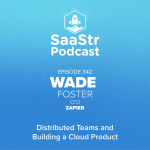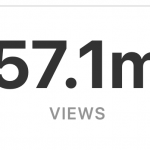- Like
- SHARE
- Digg
- Del
- Tumblr
- VKontakte
- Flattr
- Buffer
- Love This
- Save
- Odnoklassniki
- Meneame
- Blogger
- Amazon
- Yahoo Mail
- Gmail
- AOL
- Newsvine
- HackerNews
- Evernote
- MySpace
- Mail.ru
- Viadeo
- Line
- Comments
- Yummly
- SMS
- Viber
- Telegram
- JOIN
- Skype
- Facebook Messenger
- Kakao
- LiveJournal
- Yammer
- Edgar
- Fintel
- Mix
- Instapaper
- Copy Link
(Note; an update of a classic SaaStr post, with 2020+ learnings.)
A little while ago, I Zoomed with a good friend running a SaaS company doing about $4 million in ARR. A really good SaaS company. And he was beside himself.
First, he was just plain exhausted. He was in that zone from $1 to $10m in ARR when it all just gets so hard. Too much to do with too few people. We’ve talked about how The Cavalry Was Coming. That the operational part would get harder before it got easier … but it would get easier once he doubled or so, when he’d finally have some redundancy and fat on the team and the model. (More on that here).
Second, he was almost overwhelmed with The Competition. “They’re in every deal now,” he told me. “And they have five times the headcount and have raised $25 million. They’re all over us.”
I asked how much would he grow this year? He said at least 50%-60%, maybe more.
My advice: I Know It’s Tough. And, Yes, You Want to Be #1. And Yes, You Really Do Want to Be Growing 100% or more at this phase. It does seem like enough, and maybe it isn’t.
But
Don’t Overly Sweat the Competition — in the Short Term — in SaaS If You Are Growing at Least 50-60% YoY. And certainly — don’t let it take all the wind out of your sails. Or most especially, don’t let it act as an excuse.
Yes, competition can be brutal in SaaS. Super brutal in fact, because especially if you are in an oligopical space, there are very strong economic incentives to not just win in individual deals — but to Kill Your Competition. More on that here and here.
But a few things to think about vis-a-vis competition in SaaS, once you are post-Initial Traction (say $1m-$2m in ARR or so):
- Second Order Revenue (Upgrades, Word-of-Mouth, Champion Change) Will Continue to Come In and Work, No Matter How Tough the Competition Is. If you keep your customers happy, they’ll upgrade. They’ll buy more. They’ll tell their friends. Even when your champions leave, and take jobs at other companies, they’ll bring you with them. You don’t even have to be Better. You just have to be Great, and make your customers heroes and a success. More on Second Order Revenue (the key to SaaS economics) here.
- If You Are Still Growing 50-60% Or More — You Do Have a Competitive Advantage. Even if It Doesn’t Always Feel Like It. It may not always seem that way. Even if the competition has complete feature parity. Better marketing. A better brand. If you are still getting new customers, you do have an advantage in some segment at least, or you wouldn’t be winning at all. So at least in the short-term, don’t get too bent out of shape about competition. Get bent out of shape on execution. Double down on what is working.
- Even 50%-60% Growth at $10m ARR Compounds to Something Awesome. Build a Google Sheet and see where even decent growth takes you in 5 years. You may be shocked to see just how large a business you’ll have then. Even if you aren’t growing like Zoom or Slack.
- Net Negative Churn is an awesome force. Even if the competition is everywhere, if your net revenue retention is 120%-130% or higher, that means your existing customer base is still happy to buy more from you. Lean in there. That lasts decades.
- Long-term Commitment is a Huge Competitive Asset. SaaS Evolves — and is a 7-10+ Year Journey. You add new features every month, every quarter. And more importantly, new potential customers enter the market over time. You go from Early Adopters to Early Mainstream and beyond. Even if you have a bad year — the next year can be great. What matters is that you maintain the deepest commitment in your space. That may not make you #1. But it will, I think, help you grow even faster. This is one of the many reasons it’s so hard for the Big Guys to compete in SaaS. They often can’t make a 7-10 year commitment to a new market.
- Your Competition Will Stumble At Some Point. In some way. They always do, even if you can’t see it as an outsider. If you can keep growing, and wait for them to make their Big Mistake — you can pounce then. And leverage that to grow even faster. Everyone has a bad year on the 7-10 year journey. If you have the long-term commitment, you can take advantage of the competition’s bad year or bad strategic decision.
- Seeing the Competition in Every Deal Can Be a Good Sign. It may feel like they’re in all your deals when they weren’t before. But that also means you are in their deals. It’s a sign you are doing a good job, at opportunity creation if not revenue creation. At least you’re got an invite to the party. That’s one of the raw materials of success. Just focus on doing what it takes to close more of these deals, even if you are losing some / a lot / almost all of them. Drive the close rate up, even if it’s just bit-by-bit. Close feature gaps, improve the quality of the sales team and the marketing processes.
- Market Pull and Segmentation Down the Road Can Totally Change Things. You may go more enterprise. The market may get 100x larger and change as it does. Room at the Bottom can open up where none exists today. No matter what, things will change, and since you are almost certainly in a growing market — you can take advantage of those changes over time. Things aren’t static in SaaS. Measured over months, nothing changes. Over years, everything does.
My uber-point is this: I think you have about 4-5 years to get “Somewhere” in SaaS. That’s the ultimate real check-in period on the 7-10 year journey to Something Big. If you don’t build something of real scale and size by then, the team will just get too tired, the journey too taxing.
But don’t let competition be an excuse, or a strategic distraction — as long as you are growing. Because 50%-60%+ growth means the competition really isn’t as big a deal as you think. Tactically, of course, sweat competition every day in every deal. And strategically, figure out where the market will be in 2-3-5 years, and make sure you are skating to the winning opportunity there. And if you aren’t growing fast enough, yes that’s a problem. It will hurt with funding, hiring, etc. You want to be #1, no doubt, and kill the competition. But most of all, you want to grow. Grow or Die.
What I can tell you we had a Year of Hell. You can read about it here. We only grew 50-60% that year, and it was really rough. The sales manager I had at the time blamed it on everything from competition to nascent markets to me. All true, in part.
But right after that, we improved the team. And then we quickly grew > 100%. And that had nothing to do with the competition.
Which didn’t change a bit.
Published on June 13, 2020




